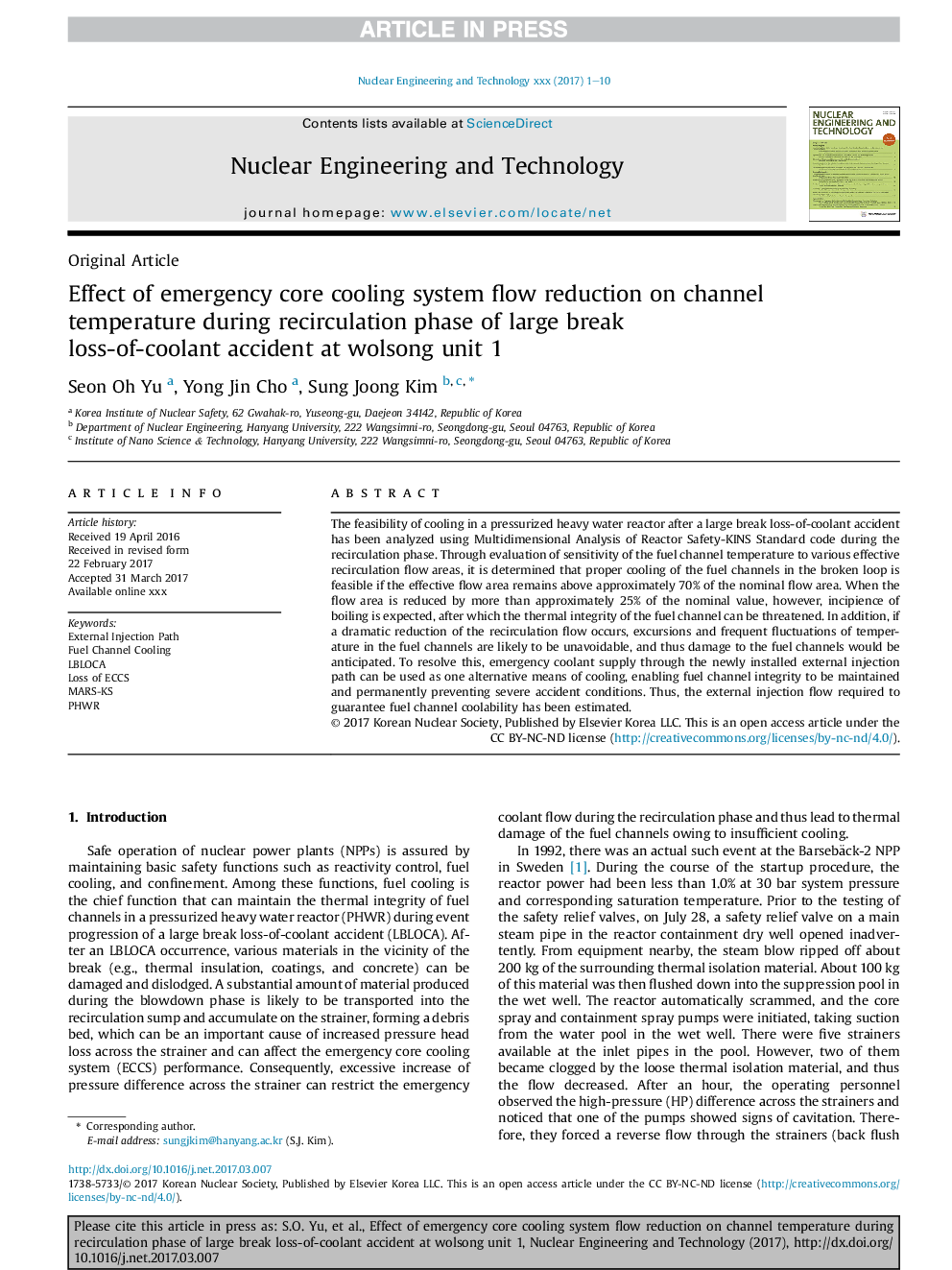| Article ID | Journal | Published Year | Pages | File Type |
|---|---|---|---|---|
| 5477925 | Nuclear Engineering and Technology | 2017 | 10 Pages |
Abstract
The feasibility of cooling in a pressurized heavy water reactor after a large break loss-of-coolant accident has been analyzed using Multidimensional Analysis of Reactor Safety-KINS Standard code during the recirculation phase. Through evaluation of sensitivity of the fuel channel temperature to various effective recirculation flow areas, it is determined that proper cooling of the fuel channels in the broken loop is feasible if the effective flow area remains above approximately 70% of the nominal flow area. When the flow area is reduced by more than approximately 25% of the nominal value, however, incipience of boiling is expected, after which the thermal integrity of the fuel channel can be threatened. In addition, if a dramatic reduction of the recirculation flow occurs, excursions and frequent fluctuations of temperature in the fuel channels are likely to be unavoidable, and thus damage to the fuel channels would be anticipated. To resolve this, emergency coolant supply through the newly installed external injection path can be used as one alternative means of cooling, enabling fuel channel integrity to be maintained and permanently preventing severe accident conditions. Thus, the external injection flow required to guarantee fuel channel coolability has been estimated.
Related Topics
Physical Sciences and Engineering
Energy
Nuclear Energy and Engineering
Authors
Seon Oh Yu, Yong Jin Cho, Sung Joong Kim,
